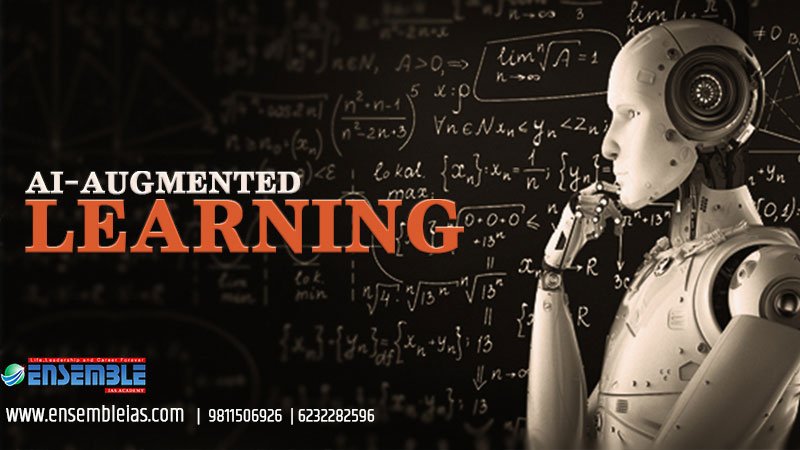AI-Augmented Learning: With advantages including safer campuses, an unbiased grading system and hassle-free administration, Artificial Intelligence is the need of the hour, for imparting quality education.
Imagine walking into a classroom, only to find that your ‘teacher’ is a bot — one who does not penalise you for your occasional tardiness, and instead continues to impart the lessons of the day. The chalk-and-blackboard method of teaching seems a fuzzy memory, and preparing for your board exams, mentored by your teacher bots, have become a routine. This vision of the future is not implausible, especially in the era of smart education, where artificial intelligence (AI) has gained prominence.
The Central Board of Secondary Education (CBSE) recently introduced AI in its school curriculum, in collaboration with Microsoft, to build capacity building programmes for high school teachers, and to integrate cloud-powered technology in teaching. However, according to Rohini Srivathsa, National Technology Officer, Microsoft India, and Larry Nelson, Regional general manager, Education, Microsoft Asia, Indian schools have a long way to go in utilising AI to improve the quality of education.
Nelson, who was in the country, a few months ago, for the Sixth Asian Summit on Education and Skills where a study on AI learning in educational institutions was launched, believes, “AI is going to help instructors deliver content and learn better, besides running classrooms more efficiently. It can help the institution itself in running a safer campus and not merely support student learning.”
While three out of four education leaders from the study agreed that AI would be able to drive competitiveness in the next three years, Nelson said that only 32% of the education institutions in the Asia Pacific have embarked on the AI journey. “From introducing an unbiased grading system, bridging the student-teacher gap, to providing hassle-free administration, AI can go a long way in aiding teachers to get better insights into student needs,” he affirmed.
He explained how AI could help in sentiment analysis, where teachers can get a better sense of how students are responding to course content. “It can help in facial recognition where teachers can comprehend their students’ needs. At a lower level, it can function as a tracking system to track student attendance, leaving teachers with more time to focus on the important aspects of school and devote more time to quality teaching.”
Srivathsa elaborated on how, in a situation where teachers are digitally connecting with students, if a student is non-participative or not engaged, one may not have an idea as to what challenges are being faced by the student. However, AI can give data signals to convey that the student is asking questions at a different level of sophistication, and it can give signals which could mean that the student needs teacher intervention though he/she may not be participating. “In short, AI could augment how teachers figure out the sentiments running deep in the class and spend more time addressing potential problem areas,” she said.
View our Blog: https://ensembleias.com/blog/
College vs. school
according to Srivathsa, with respect to the institutions they have partnered with, labs are being set up to train teachers and get the infrastructure going. “The most amount of interesting work we have done, especially in terms of building the programme, is with the Indian School of Business (ISB). Not only have those involved there thought of the lab as a learning environment, but also as a research platform.”
How did Microsoft get started with introducing AI to K-12 schools? Srivathsa is quick to answer, “The partnership with CBSE is for classes IX to XII. We had entered the segment primarily to ensure that at that stage, students had basic science skills, gained an understanding of analytical tools and were opting for AI as an elective with the right background in place. The programme is just starting out by getting the content together.”
Visit our store at http://online.ensemble.net.in
Nelson adds how, out of the schools they are working with, not all of them are top-tier schools — some are state schools, yet others are BITS Pilani-level schools, and some that aren’t too mainstream. “We intentionally chose to proceed that way as we wanted to get the message across that AI is for everyone, not just the elite. It is going to become a pressing need for schools across tiers. We are still working on training teachers, helping educators understand the importance of learning, the tools to experiment, and so on. We have started the journey and we have a long way to go,” he says, signing off.
Source: The Hindu | Written : Madhuvanti S. Krishnan
#ai_augmented_learning #artificial_intelligence #schools #education #cbse #geography_optional #upsc2020 #ias #k_siddharthasir #Government_of_India #india #studyabroad #geography #upsc #bhugol #government #news #dailynews #gk #dailyquiz #editorial




